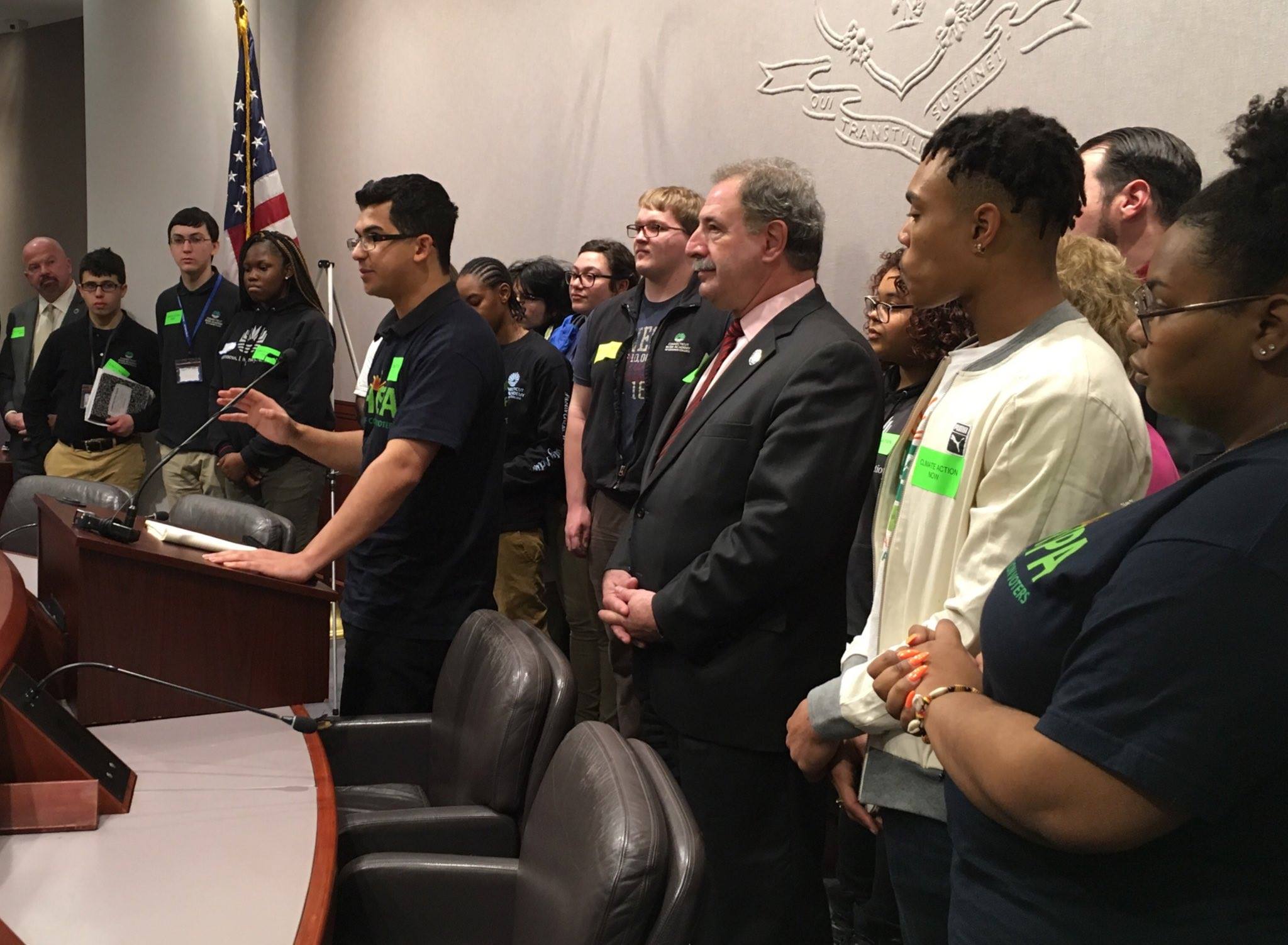
When I walked into the Legislative Office Building in Hartford on the morning of April 18, I was overwhelmingly excited and a little bit nervous. Yet, I felt confident in the job that my fellow organizers and expert advocates had done. We put so much time, thought, and preparation into Youth Climate Action Day to support legislation to set climate action targets and fast-track renewable energy growth.
As participants trickled in, I could feel the energy growing in the room – especially when a delegation of high schoolers from River Academy arrived. There were activists from our partner organization, the environmental justice group CHISPA, students from UConn and Trinity, and young people who simply heard about the event.
Our press conference (watch here) exceeded expectations. We had no less than six legislators five of whom spoke, mixing their voices with youth activists who came to share their personal experience and passion for igniting change. We all drew applause, and projected a message of pointed determination.
After the advocacy training conducted by myself and CHISPA’s Alex Rodriguez, we helped each participant find their legislator and sent them off, putting their passion to work. The room was suddenly empty and quiet, and I couldn’t believe that what we worked so hard on was almost over. As I shared photos of the event on social media, some other reflections about the process filled my mind.
One thing that was clear was that engaging more young people in the political process can only be a good thing. As young people, we have a moral voice on the problem of climate change. We are the ones most acutely under threat, especially those in more vulnerable communities. Our organizing team recognized a need to make advocacy easy and accessible to any young person who wants to get involved, and our Youth Climate Action Day made the first strides in getting there.
My belief in the power of young people was only reinforced as participants returned to our home base in the Legislative Office Building. They seemed energized from their attempts to reach legislators, even if they hadn’t been successful in sparking a face-to-face conversation. A few remarked to me that they wouldn’t stop “pestering” their representatives until they were heard. Then we learned that our voices were, in fact, heard. A new omnibus energy bill was being drafted, that included the high Renewable Portfolio Standard and shared solar program we had been pressing for.
On our debriefing conference call, we discussed how to strengthen youth advocacy with speakers’ training, lobbying packets, school presentations and more. I can’t wait to see how these opportunities develop, and how they strengthen this movement.
Climate change is an immense issue, one that can’t be easily reduced to a sound bite or a one-minute conversation with my representative. It takes a lot of work, both internally and with one’s community of support, to refine opinions and arguments about any piece of legislation that aims to tackle this most complicated problem. Along the way, each person can establish what balance between emotional and technical tone they want to strike when discussing the issues with their legislators, colleagues, and friends. I certainly felt supported by Clean Water Action and our coalition partners when preparing for this event, and I hope everyone did.
I hope our Youth Climate Action Day inspired some other passionate young people to direct their efforts towards changing the laws to make action on climate change easier. I hope they work hard to create opportunities for our state to be a leader on renewable energy and energy efficiency. Above all, I hope that our momentum only grows stronger and that young people continue to be a moral voice on climate change and the environment.



